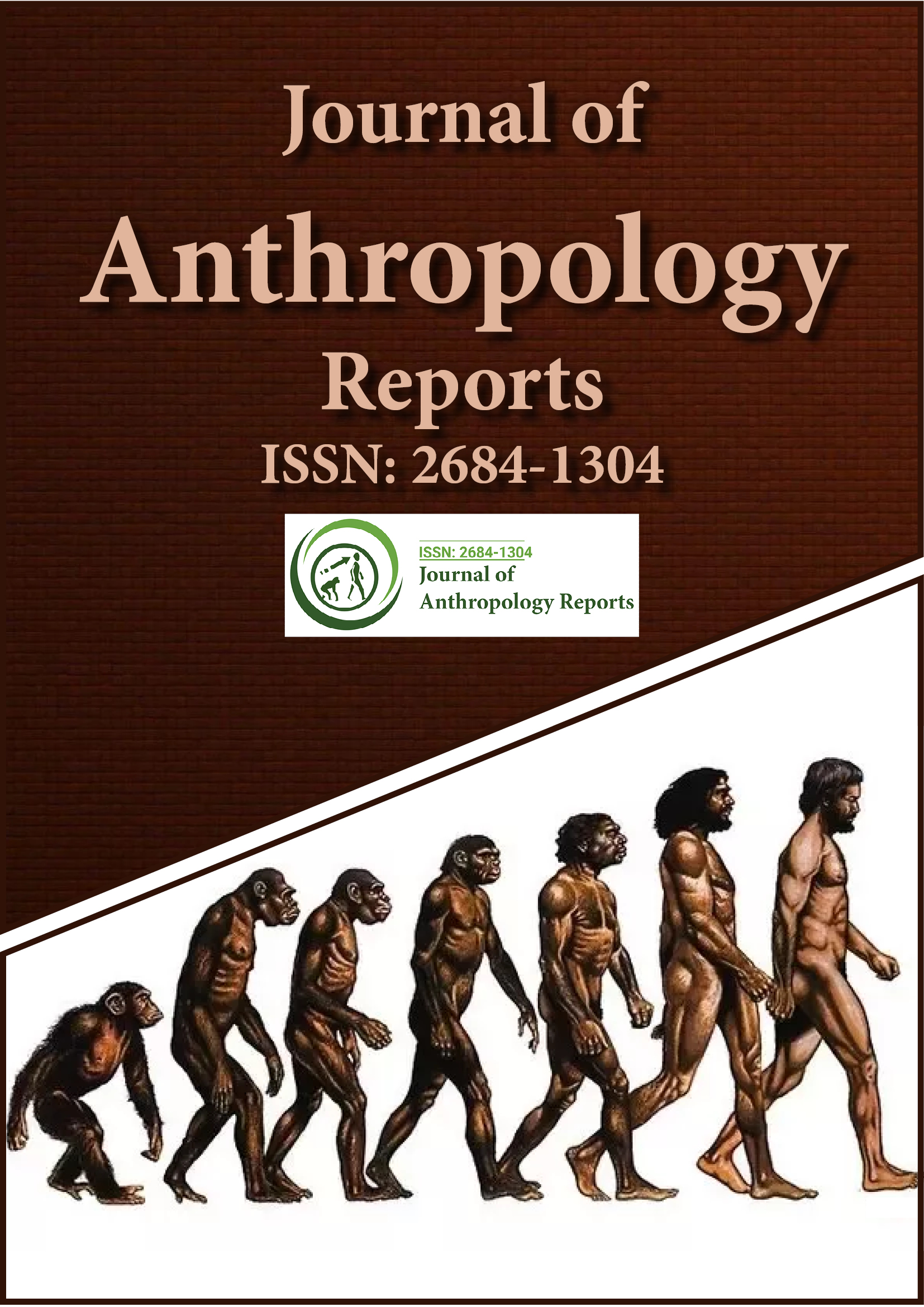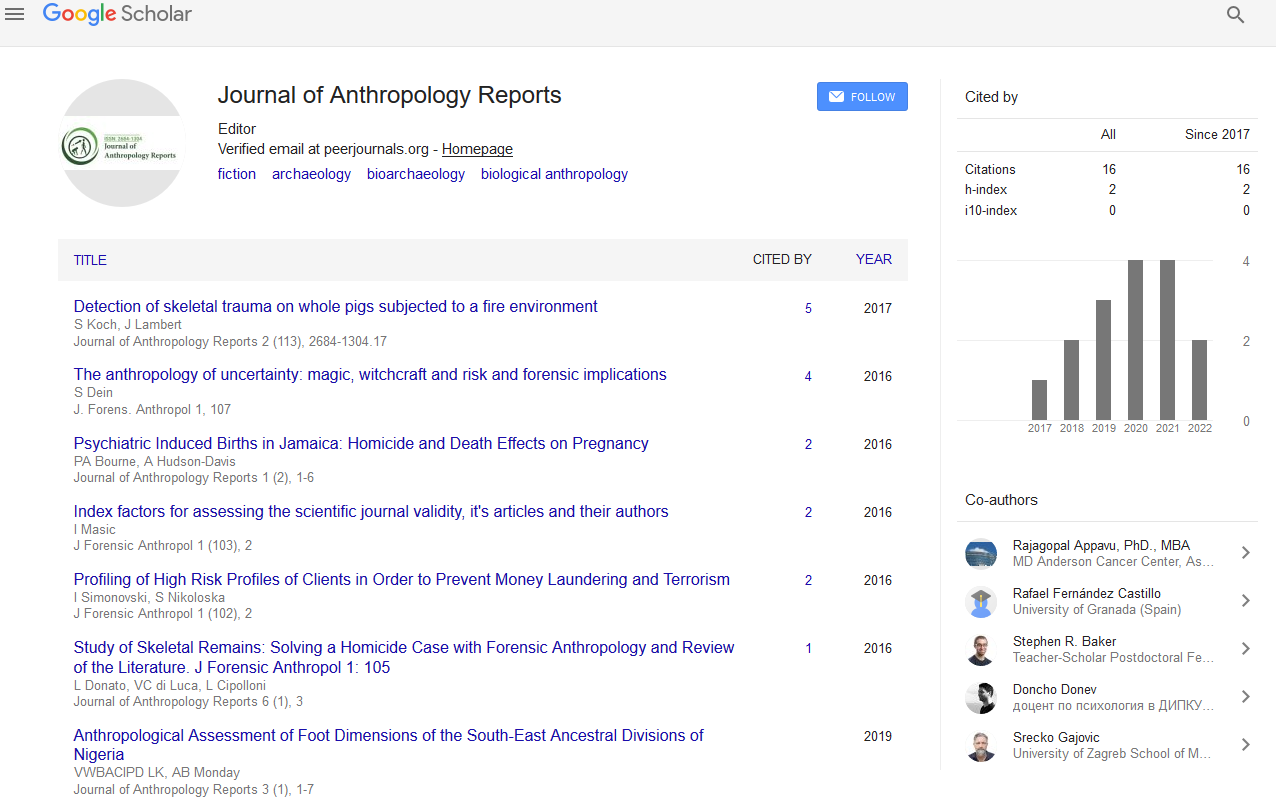Indexed In
- RefSeek
- Hamdard University
- EBSCO A-Z
Useful Links
Share This Page
Journal Flyer

Open Access Journals
- Agri and Aquaculture
- Biochemistry
- Bioinformatics & Systems Biology
- Business & Management
- Chemistry
- Clinical Sciences
- Engineering
- Food & Nutrition
- General Science
- Genetics & Molecular Biology
- Immunology & Microbiology
- Medical Sciences
- Neuroscience & Psychology
- Nursing & Health Care
- Pharmaceutical Sciences
Opinion Article - (2023) Volume 6, Issue 2
Roles and Functions of Forensic Anthropologists
Alisha Winton*Received: 19-Jun-2023, Manuscript No. JFA-23-21914; Editor assigned: 21-Jun-2023, Pre QC No. JFA-23-21914 (PQ); Reviewed: 05-Jul-2023, QC No. JFA-23-21914 (QC); Revised: 12-Jul-2023, Manuscript No. JFA-23-21914 (R); Published: 20-Jul-2023, DOI: 10.35248/2684-1304.23.6.163
Description
An applied subfield of physical or biological anthropology is forensic anthropology. Using their knowledge of modern human skeletal variation, forensic anthropologists assist law enforcement in locating unidentified deceased individuals and, if at all possible, providing details about the circumstances surrounding that person's death. The American Leading group of Measurable Human studies characterizes criminological human studies as "the utilization of the study of physical or natural human sciences to the lawful cycle," adding that "physical or natural anthropologists who have practical experience in criminology fundamentally center their examinations around the human skeleton". Within biological anthropology, the field of forensic anthropology is relatively new.
The events that arguably altered the course of the field divide the development of forensic anthropology into three distinct periods: the early 1800s to 1938, the consolidation period from 1939 to 1971, and the modern period from 1972 to the present In the beginning, only anatomists, physicians, and a few physical anthropologists who mostly worked as museum curators or university professors could engage in forensic anthropology. The forensic aspects of physical anthropology lacked formal methods or instructions, and practitioners were occasionally consulted by law enforcement on cases involving skeletonized remains.
Although forensic anthropological knowledge has been utilized in Disaster Victim Identification (DVI) for more than a century, American anthropologist Thomas Dale Stewart did not emphasize the significance of including forensic anthropology in the identification process until 1970. Since then, there have been a number of disasters that have seen the forensic anthropologist's role in DVI grow. Feedback received following the Boxing Day Tsunami in 2004 (Indian Ocean Earthquake and Tsunami 2004) revealed that the presence of a forensic anthropologist could have been helpful in numerous instances. Forensic anthropology is the applied subfield of physical/biological anthropology in which a forensic anthropologist applies anthropological theory and methods to legal issues.
The roles and responsibilities of forensic anthropologists are as follows:
• When soft tissue has deteriorated to the point where these bodily characteristics cannot be ascertained by visual inspection, forensic anthropologists attempt to determine the biological profile (race/ethnicity, sex, age, and stature) of a deceased person.
• To determine the manner and cause of death, forensic anthropologists investigate the nature of traumatic injuries to human bone, such as bullet wounds, stab wounds, and fractures.
• Measurable anthropologists can decide the posthumous stretch (how much time that has elapsed since people have passed on) as they have completely concentrated on how much crumbling that happens in corpses over the long haul.
• Forensic anthropologists aid in the discovery and recovery of buried or surface remains relevant to the forensic investigation due to their knowledge of archaeological techniques.
• Legal anthropologists are likewise well versed in certain distinguishing proof of a departed individual which is finished through the special recognizing highlights present in essentially all skeletons.
Forensic anthropologists play a variety of other roles in contemporary society in addition to the work that was previously mentioned. When it comes to locating the victims of large-scale disasters, these specialists are first consulted. Forensic anthropologists may be needed for events like plane crashes, wars, natural disasters, and anything else where a lot of people die and their bodies are dismembered or disfigured. The study of atrocities committed during war and civil unrest is another area in which forensic anthropologists work. In addition, forensic anthropologists have become involved in the investigation of individuals with no medical or legal significance but historical significance.
Citation: Winton A (2023) Roles and Functions of Forensic Anthropologists. J Anthropol Rep. 6:163.
Copyright: © 2023 Winton A. This is an open-access article distributed under the terms of the Creative Commons Attribution License, which permits unrestricted use, distribution, and reproduction in any medium, provided the original author and source are credited.

